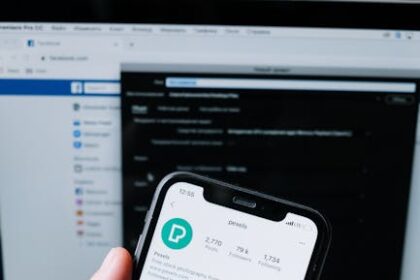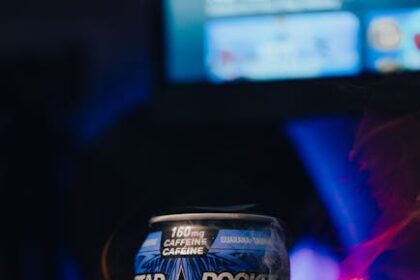Understanding CPA: The Cornerstone of Profitable Facebook Advertising
The pursuit of lower Cost Per Acquisition (CPA) is not merely a tactical goal; it is the strategic imperative for any business leveraging Facebook Ads for sustainable growth. CPA, the ultimate metric representing the cost incurred to acquire a single customer or desired conversion, directly dictates the profitability and scalability of your advertising efforts. A high CPA can quickly deplete budgets, stifle expansion, and render campaigns unprofitable, even if they generate a high volume of leads or sales. Conversely, a consistently low CPA allows for aggressive scaling, improved return on ad spend (ROAS), and a healthier bottom line. This foundational understanding is critical before delving into the nuanced strategies of optimization.
CPA is fundamentally derived from a simple equation: Total Ad Spend divided by the Number of Conversions. However, the variables influencing this equation are manifold and interconnected, encompassing everything from your ad creatives to your landing page experience. To effectively lower CPA, one must dissect its underlying components: Cost Per Mille (CPM), Click-Through Rate (CTR), and Conversion Rate (CVR).
CPM, or cost per thousand impressions, reflects the expense of reaching your target audience. It is influenced by audience competition, ad quality (Facebook’s relevance score), and chosen placements. A higher CPM translates to more expensive initial exposure. CTR measures the percentage of people who see your ad and click on it. A low CTR suggests your ad isn’t resonating with the audience or isn’t compelling enough to generate interest. Finally, CVR signifies the percentage of people who click on your ad and then complete the desired action (e.g., purchase, lead form submission) on your landing page. A low CVR indicates a disconnect between your ad’s promise and the landing page’s delivery, or friction in the conversion process itself. Optimizing each of these elements in isolation, and then understanding their synergistic effects, is paramount to achieving a dramatically reduced CPA. Every secret to lowering CPA on Facebook Ads branches from enhancing one or more of these core metrics.
Laying the Foundation: The Indispensable Facebook Pixel and Conversion API
At the heart of any successful CPA reduction strategy lies impeccable tracking. Without accurate, robust conversion data, all optimization efforts are speculative. The Facebook Pixel remains the primary conduit for transmitting user behavior data from your website back to Facebook’s advertising platform. Properly installed and configured, the pixel tracks standard events like PageView, ViewContent, AddToCart, InitiateCheckout, and Purchase, alongside custom events that are unique to your business goals.
Beyond basic installation, optimizing the pixel involves several critical steps. Firstly, ensure the pixel is firing correctly across all relevant pages and for all desired actions. Utilize the Facebook Pixel Helper Chrome extension to diagnose common issues such as incorrect pixel IDs, duplicate events, or missing parameters. Secondly, leverage event parameters to pass richer data back to Facebook. For e-commerce, this includes values, currency, content IDs, and content types for product catalog matching. For lead generation, it might involve lead categories or form IDs. Richer data allows Facebook’s algorithm to better understand the value of different conversions and optimize delivery more effectively for higher-value actions.
A significant advancement in tracking accuracy and resilience, particularly in the face of evolving privacy landscapes (like iOS 14.5+ changes), is the Facebook Conversions API (CAPI). CAPI allows you to send conversion events directly from your server to Facebook, bypassing browser-side restrictions and improving data reliability. Implementing CAPI alongside your pixel (a hybrid setup) creates a more robust tracking system, ensuring fewer lost conversions and a more accurate representation of your ad performance. This dual approach provides a higher Event Match Quality score, which signals to Facebook that your data is reliable, leading to more intelligent ad delivery and ultimately, lower CPAs. For businesses serious about scale, CAPI is no longer optional but a necessity. The investment in its setup pays dividends in improved optimization and reduced data discrepancies. Regular audits of your pixel and CAPI integration are non-negotiable, ensuring data integrity remains pristine.
Mastering Audience Targeting for CPA Efficiency
The precision with which you define and segment your audience is arguably the most impactful lever for lowering CPA. Irrelevant targeting leads to wasted impressions, lower CTRs, and subsequently, inflated costs. Facebook provides an unparalleled array of targeting options, and the secret lies in strategically combining and refining them across the advertising funnel.
Core Audiences: Precision Demographics and Interests
While often seen as basic, core audience targeting, when executed with sophistication, can yield impressive results. Go beyond broad age and gender parameters. Dive deep into detailed targeting based on interests, behaviors, and demographics. For instance, instead of targeting “digital marketing,” consider layering interests like “SEO,” “content marketing,” and “social media management” to reach a more specific professional cohort. Utilize the “narrow audience” feature to combine interests with an “AND” logic, ensuring users meet multiple criteria. Exclude irrelevant interests or demographics that historically do not convert. The Audience Overlap tool within Facebook Ads Manager can also be invaluable, helping identify and merge highly overlapping audiences to prevent unnecessary competition against yourself and streamline budget allocation. Effective core audience targeting ensures that your ad budget is spent on individuals most likely to have an affinity for your product or service, thus improving CTR and initial conversion propensity.
Custom Audiences: Leveraging Your Existing Data Assets
Custom Audiences are a goldmine for CPA reduction because they target individuals who have already shown some level of engagement or intent.
- Website Custom Audiences (WCAs): Segment website visitors based on specific pages visited, time spent on site, or actions taken (e.g., product view, add to cart, initiate checkout). The more granular, the better. Instead of a general “all website visitors” audience, create segments like “visitors who viewed product X in the last 7 days but didn’t purchase” for highly specific remarketing campaigns. This allows for highly personalized ad messaging that directly addresses their demonstrated interest, leading to very high conversion rates and low CPAs.
- Customer List Custom Audiences: Upload your customer email lists or phone numbers. This is one of the most powerful custom audiences. Target existing customers for upselling, cross-selling, or loyalty programs. Exclude existing customers from acquisition campaigns to avoid wasted spend on individuals who have already converted. This is a crucial CPA optimization tactic.
- Engagement Custom Audiences: Target users who have engaged with your Facebook or Instagram page, watched your videos, or interacted with your lead forms. These individuals are “warmed up” prospects who are already familiar with your brand, making them more receptive to conversion messages. For example, run a conversion campaign targeting people who watched 75% of your product demo video. Their demonstrated interest significantly reduces the barrier to conversion.
Lookalike Audiences: Scaling Your Best Customers
Lookalike Audiences are Facebook’s sophisticated way of finding new potential customers who share similar characteristics with your existing high-value customers or converters. The quality of your source audience directly impacts the effectiveness of your lookalike.
- Source Quality: The best lookalike sources are high-intent custom audiences: purchasers, high-value leads, or individuals who completed a critical conversion event. Avoid creating lookalikes from broad sources like “all website visitors” if your website has high bounce rates or diverse traffic.
- Percentage Ranges: Experiment with different lookalike percentages (1%, 1-2%, 1-5%, 1-10%). A 1% lookalike is typically the most similar to your source audience and often yields the lowest CPA initially, but has a smaller audience size. As you scale, you might expand to 2-3% or higher, but always monitor CPA closely.
- Layering and Exclusion: Combine lookalikes with specific interest layers to further refine them. Crucially, always exclude converted customers and relevant custom audiences from your lookalike campaigns to prevent ad fatigue and wasted spend.
Audience Segmentation Across the Funnel:
The most sophisticated approach to audience targeting for CPA reduction is to segment your audiences based on their position in the marketing funnel:
- Top-of-Funnel (ToFu): Broad interest-based audiences, lookalikes from broad sources (e.g., all website visitors), or video viewers. The goal here is awareness and initiating engagement, not direct conversion. CPA might be higher here, but it’s an investment in future conversions.
- Middle-of-Funnel (MoFu): Warmer lookalikes (e.g., from AddToCart events), engagement audiences, or specific page visitors. The goal is consideration and nurturing interest. Ads here might offer more detailed information, case studies, or demos.
- Bottom-of-Funnel (BoFu): Highly targeted remarketing audiences (e.g., cart abandoners, lead form starters, specific product page viewers), or lookalikes from high-value purchasers. The goal is direct conversion, often with urgency or specific offers. This is where your lowest CPAs typically reside due to high intent.
By meticulously segmenting and tailoring messages to each audience’s stage of intent, you ensure that every ad impression has the highest possible relevance, directly translating to higher CTRs, improved CVRs, and significantly reduced CPAs across your entire ad ecosystem.
Crafting Compelling Ad Creatives that Convert
Your ad creative is the face of your campaign, responsible for capturing attention, conveying your message, and compelling action. Even with perfect targeting, poor creatives will result in low CTRs, high CPMs (due to low relevance scores), and ultimately, elevated CPAs. Crafting high-performing creatives is an iterative process of experimentation and data-driven refinement.
Visuals: The First Impression
Visuals are paramount on a highly visual platform like Facebook.
- High-Quality Imagery and Video: Blurry images or amateurish videos instantly signal low quality. Invest in professional-grade visuals. Video often outperforms static images due to its ability to convey more information and capture attention longer.
- A/B Testing Variations: Never settle for one visual. Test different types (product shots, lifestyle, user-generated content, infographics), different angles, colors, and subjects. For video, test different opening hooks, lengths, and calls to action. Dynamic Creative Optimization (DCO) can automate this testing to some extent.
- Format Optimization: Tailor visuals to specific placements. Square images/videos (1:1) work well in feeds. Vertical formats (9:16) are essential for Stories and Reels. Carousel ads are excellent for showcasing multiple products or features. Collection ads are ideal for e-commerce, offering an immersive shopping experience directly within Facebook.
- User-Generated Content (UGC): UGC often significantly outperforms polished brand content because it feels authentic and trustworthy. Encourage customers to share their experiences and leverage these organic assets in your ads. Testimonials in video format are particularly powerful.
Ad Copy: The Persuasion Engine
Once the visual captures attention, your ad copy must articulate your value proposition and drive the desired action.
- Headlines: The headline is critical, often the first piece of text people read after seeing the visual. It must be compelling, benefit-driven, and create curiosity. Test different benefit statements, questions, or urgent calls to action. Keep it concise.
- Primary Text: This is where you tell your story, highlight benefits, address pain points, and build desire.
- Problem-Solution: Clearly identify your audience’s pain point and present your product/service as the ideal solution.
- Storytelling: Engage users emotionally by narrating a relatable story about how your product transformed someone’s life.
- Urgency and Scarcity: Limited-time offers, limited stock, or approaching deadlines can incentivize immediate action.
- Social Proof: Integrate testimonials, statistics (e.g., “trusted by 10,000 customers”), or awards.
- Clarity and Conciseness: Get to the point quickly. Use short paragraphs, bullet points, and emojis to break up text and improve readability.
- Call-to-Action (CTA): Your CTA button must be clear, strong, and relevant to the desired conversion. “Shop Now,” “Learn More,” “Sign Up,” “Download,” “Get Quote” are common examples. Ensure the CTA button text aligns perfectly with the ad’s objective and landing page’s primary action.
- Testing Angles: Don’t assume you know what resonates. Test different ad copy angles: feature-focused vs. benefit-focused, logical arguments vs. emotional appeals, direct response vs. soft sell. The goal is to uncover the messaging that generates the highest CTR and subsequent conversion rate.
Ad Placement Optimization:
While automatic placements are Facebook’s default, manually selecting placements can often lead to lower CPAs, especially if specific placements consistently underperform for your objective.
- Analyze performance breakdowns by placement. If Audience Network or Messenger placements consistently yield significantly higher CPAs, consider excluding them.
- Recognize that different placements have different user contexts. Instagram Stories users might be more receptive to short, visually rich videos, while Facebook Feed users might engage with longer-form content. Tailor creatives to fit the native experience of each placement for optimal performance.
Optimizing creatives is an ongoing cycle. Constantly refresh your ad creative to combat ad fatigue, which leads to diminishing returns and rising CPAs. A/B test relentlessly, track metrics like CTR and CVR, and scale winners while pausing underperformers.
Strategic Bidding and Budget Optimization for Reduced CPA
How you bid and allocate your budget on Facebook Ads directly impacts your CPA. Understanding Facebook’s auction system and choosing the right strategies are crucial for efficiency.
Bidding Objectives and Strategies:
Facebook offers various bidding strategies, each suited for different objectives and risk tolerances.
- Lowest Cost (formerly Automatic Bid): This is the default and often recommended starting point. Facebook aims to get you the most conversions for your budget, typically without a specific cost target. It’s ideal when you’re exploring the potential CPA of an audience.
- Cost Cap: You set an average target CPA, and Facebook tries to stay within that range. This strategy gives you more control over your CPA but can limit delivery if your cap is too low, potentially preventing you from getting enough conversions. It’s useful once you have a good understanding of your achievable CPA.
- Bid Cap: You set a maximum bid amount for each auction. This gives you the most control but requires deep knowledge of your conversion value and competitive landscape. If your bid cap is too low, you might not win enough auctions. If it’s too high, you might overpay. Generally, less recommended for beginners.
- Target ROAS (Return on Ad Spend): For e-commerce businesses, this is powerful. You tell Facebook the minimum ROAS you want to achieve (e.g., 200% ROAS), and it optimizes for conversion value. This directly aligns your bidding with profitability, making it a powerful CPA-reduction strategy, as Facebook prioritizes higher-value conversions.
When to Use Which:
- Start with Lowest Cost to allow Facebook’s algorithm to learn and identify the optimal CPA range for your chosen audience and creative.
- Once you have a stable CPA and sufficient conversion volume (typically 50 conversions per week per ad set to exit the learning phase effectively), consider switching to Cost Cap if you need tighter control over your average CPA.
- Target ROAS is the ideal choice for e-commerce or lead generation where the value of a conversion varies and profitability is key. Ensure you’re passing conversion value correctly via the pixel or CAPI.
Budget Allocation: CBO vs. ABO
- Ad Set Budget Optimization (ABO): You set a daily or lifetime budget for each individual ad set. This gives you granular control, allowing you to manually allocate more budget to performing ad sets and less to underperforming ones. Good for A/B testing different audiences or creatives where you want to ensure each gets a specific budget.
- Campaign Budget Optimization (CBO): You set a daily or lifetime budget at the campaign level, and Facebook automatically distributes it across your ad sets within that campaign to get the most results. CBO is often preferred for scaling and CPA reduction because Facebook’s algorithm is better at identifying winning ad sets and allocating budget to them in real-time. It minimizes wasted spend on lower-performing ad sets.
When to Use CBO Effectively:
- When you have multiple ad sets targeting similar audiences or different stages of the funnel within the same campaign.
- When scaling. CBO helps maintain CPA as you increase spend by dynamically shifting budget to the most efficient opportunities.
- For campaigns where the goal is to maximize conversions for a set budget, regardless of which ad set delivers them.
The Learning Phase:
Understanding Facebook’s learning phase is critical for CPA stability. When you launch a new ad set or make significant edits, it enters a “learning phase” where the algorithm explores the best way to deliver your ads. It needs approximately 50 conversions per week to exit this phase and optimize effectively. Frequent edits (e.g., changing budget significantly, targeting, creative, or bid strategy) can re-enter an ad set into the learning phase, leading to volatile CPA. Minimize edits during this period and allow the algorithm time and sufficient conversions to learn. Patience during the learning phase directly contributes to a more stable and lower CPA over time.
Landing Page Optimization (LPO): The Conversion Battlefield
Your Facebook ad might be brilliant, but if your landing page fails to deliver on the promise, your CPA will soar. The landing page is where the conversion actually happens, making it the most critical element after the click. An optimized landing page can dramatically increase your Conversion Rate (CVR), directly translating to a lower CPA, even if your CPM and CTR remain constant.
Relevance and Message Match:
This is non-negotiable. The content, tone, and offer on your landing page must directly match the ad that brought the user there. If your ad promises a “50% off summer sale,” but the landing page has no mention of it or lists only full-price items, users will bounce, and your CVR will plummet. Ensure consistent messaging, visuals, and calls to action from ad to landing page. This builds trust and reduces friction.
Clarity of Value Proposition:
Immediately upon landing, users should understand what your product/service is, what problem it solves, and why they should care.
- Above the Fold: Your unique selling proposition (USP) should be clear and prominent without scrolling.
- Concise Copy: Use clear, benefit-driven headlines and subheadings. Avoid jargon. Focus on what the user gains.
- Visual Hierarchy: Guide the user’s eye to the most important elements – the value proposition, benefits, and call to action.
Speed and Mobile-First Design:
In today’s mobile-dominated world, page load speed is paramount. A delay of even a few seconds can lead to significant bounce rates.
- Optimize Images: Compress images without sacrificing quality.
- Leverage Caching: Utilize browser caching and content delivery networks (CDNs).
- Minimize Code: Reduce unnecessary scripts and plugins.
- AMP/Instant Experiences: Consider Accelerated Mobile Pages (AMP) or Facebook’s Instant Experience (Canvas) ads for near-instant loading times within the Facebook ecosystem.
- Mobile Responsiveness: Ensure your landing page is perfectly responsive and provides an excellent user experience on all mobile devices. Test it thoroughly on various screen sizes. Forms should be easy to fill out on mobile.
Trust Signals and Social Proof:
Users are more likely to convert if they trust your brand.
- Testimonials and Reviews: Prominently display authentic customer reviews, star ratings, or case studies. Video testimonials are incredibly persuasive.
- Security Badges: For e-commerce, display SSL certificates, payment gateway logos, and trust seals (e.g., McAfee Secure, Norton Secured).
- Guarantees: Offer money-back guarantees or satisfaction guarantees to reduce perceived risk.
- Awards and Recognitions: Showcase any industry awards or media mentions.
Clear and Singular Call to Action (CTA):
Every landing page should have one primary goal and one clear CTA.
- Prominence: The CTA button should stand out (color, size, placement).
- Action-Oriented Text: Use strong verbs like “Get Your Free Quote,” “Download Now,” “Start Your Free Trial,” “Buy Now.”
- Consistency: Repeat the CTA strategically throughout the page without being overwhelming.
- Minimize Distractions: Remove unnecessary navigation menus, multiple offers, or external links that could pull the user away from the primary conversion goal.
Form Optimization (for Lead Generation):
If your landing page requires form submission:
- Minimize Fields: Only ask for essential information. Every additional field decreases conversion rate.
- Label Fields Clearly: Use intuitive labels and provide placeholder text.
- Error Validation: Provide immediate and helpful feedback for form errors.
- Multi-Step Forms: For longer forms, consider breaking them into smaller, digestible steps to reduce perceived effort. This can improve initial completion rates.
Continuous A/B Testing:
LPO is an ongoing process. A/B test various elements of your landing page:
- Headlines and subheadings.
- CTA button text, color, and placement.
- Image/video variations.
- Long-form vs. short-form copy.
- Testimonial placement.
- Form field order and quantity.
- Pricing display.
Use tools like Google Optimize, Optimizely, or built-in A/B testing features in your landing page builder. Small improvements in your CVR can have a massive impact on your CPA. A 1% increase in CVR can effectively reduce your CPA by 1%, making LPO one of the most powerful levers.
Advanced Conversion Optimization Techniques
Beyond the foundational elements, several advanced strategies can further refine your Facebook Ads performance and drive your CPA even lower. These techniques often involve more sophisticated data utilization, automation, and funnel orchestration.
Full-Funnel Strategy and Audience Mapping:
While mentioned in targeting, applying a disciplined full-funnel strategy is an advanced technique in itself. It means not just having different audiences but meticulously mapping specific creatives, offers, and landing page experiences to each stage:
- Awareness (ToFu): Use engaging video, educational content, or broad interest-based campaigns. Optimize for ThruPlay or Reach. The goal is to introduce your brand and build initial interest. CPA might be higher here, but it feeds the lower funnel.
- Consideration (MoFu): Target video viewers, engaged audience members, or specific content readers. Offer lead magnets, case studies, or product demos. Optimize for Lead Generation or landing page views with intent.
- Conversion (BoFu): Hyper-target cart abandoners, high-intent website visitors, or existing leads with specific product offers, urgency, or customer testimonials. Optimize for purchases or specific conversion events. This is where you expect the lowest CPA.
This structured approach ensures that users are nurtured through the journey, increasing their propensity to convert at each stage.
Dynamic Creative Optimization (DCO):
DCO is a powerful feature that allows Facebook to automatically deliver the best performing combinations of your creative assets (images, videos, headlines, primary text, calls to action) to the most relevant audience segments. Instead of manually creating dozens of ad variations, you upload individual assets, and DCO does the heavy lifting, continuously testing and learning. This can significantly accelerate the creative testing process, quickly identifying winning combinations that drive lower CPAs by optimizing creative relevance for each user.
Dynamic Product Ads (DPA) / Catalog Sales Campaigns:
Absolutely essential for e-commerce, DPAs allow you to automatically showcase relevant products to users based on their browsing behavior on your website or app.
- Retargeting: Show users the exact products they viewed but didn’t purchase, or complementary products. This highly personalized approach leads to very high CVRs and extremely low CPAs, making it one of the most profitable ad types.
- Prospecting: Use broad audience targeting or lookalikes to show dynamic product ads to new potential customers based on what’s popular in your catalog or what’s similar to products they’ve engaged with elsewhere on Facebook.
Ensure your product catalog is perfectly set up and updated, with high-quality images and accurate pricing.
Rigorous A/B Testing Methodology:
Successful CPA reduction hinges on systematic testing.
- Hypothesis Formulation: Always start with a clear hypothesis (e.g., “Changing the CTA button color from blue to green will increase CVR by 5% because green signifies ‘go'”).
- Single Variable Testing: Test only one variable at a time (e.g., headline, image, audience segment, bid strategy) to accurately attribute performance changes.
- Statistical Significance: Ensure your tests run long enough and gather enough data to achieve statistical significance. Don’t make decisions based on insufficient data. Facebook’s A/B testing tool (split tests) can help manage this.
- Documentation: Keep meticulous records of your tests, results, and learnings. This institutional knowledge is invaluable for continuous improvement.
Understanding Attribution Models:
How Facebook credits conversions to your ads (attribution window) impacts how you interpret CPA.
- Default Attribution: Facebook’s default is typically 7-day click and 1-day view. This means a conversion is attributed to your ad if a user clicked on it within 7 days or viewed it within 1 day, even if they interacted with other marketing channels.
- Custom Attribution: You can customize this (e.g., 1-day click, 28-day click). Shorter windows (e.g., 1-day click) will show a higher CPA but reflect more immediate impact. Longer windows might show a lower CPA but dilute the direct impact of the ad. Choose an attribution window that aligns with your sales cycle and business reporting needs. Understand that CPA metrics from Facebook Ads Manager might differ from your CRM or Google Analytics due to differing attribution models.
Robust Reporting and Analytics:
You can’t optimize what you don’t measure.
- Key Metrics for CPA Analysis: Regularly monitor not just CPA, but also CPM (cost of impressions), CTR (ad relevance), CPC (cost per click), and CVR (landing page effectiveness). Each tells a part of the CPA story.
- Breakdowns: Utilize Facebook’s breakdown feature to analyze performance by age, gender, region, placement, time of day, and device. This can reveal hidden opportunities or inefficiencies. For example, if your CPA is significantly higher for mobile users on Android devices, it might indicate an issue with your mobile landing page experience for that segment.
- Custom Dashboards: Create custom dashboards within Facebook Ads Manager or integrate with external reporting tools (e.g., Google Data Studio) to visualize key performance indicators and identify trends quickly.
- Identifying Bottlenecks: By analyzing the flow from impression to conversion, you can pinpoint where users are dropping off. High CPM, low CTR suggests creative/audience issue. High CPC, low CVR suggests a landing page issue. By isolating the bottleneck, you can focus your optimization efforts for maximum CPA reduction.
Troubleshooting and Scaling CPA Effectively
Even the most optimized campaigns can experience CPA fluctuations. Understanding how to diagnose problems and scale effectively without inflating costs is paramount.
Diagnosing CPA Spikes:
A sudden increase in CPA demands immediate investigation. Common culprits include:
- Audience Fatigue: Your audience has seen your ads too many times and is no longer responding. Frequency metrics (impressions per person) will be high, while CTR will likely drop.
- Ad Fatigue: Your specific ad creatives have become stale. Users are ignoring them or actively developing “banner blindness.” Again, CTR drops.
- Increased Competition: Other advertisers are targeting the same audience, driving up CPMs in the auction.
- Seasonality or Market Shifts: Industry events, holidays, or economic changes can affect consumer behavior and demand.
- Tracking Issues: Your pixel or CAPI might have stopped firing correctly, leading to underreported conversions and thus an artificially high CPA.
- Landing Page Changes: Recent changes to your website or landing page could have inadvertently introduced friction, decreasing CVR.
Systematic Troubleshooting Steps:
- Check Tracking: First and foremost, verify your pixel and Conversions API are firing correctly for all conversion events using Pixel Helper, Events Manager, and your server logs. Mismatched or missing data leads to inaccurate CPA readings.
- Review Audience Performance:
- Frequency: Is your ad frequency too high (e.g., above 3-4 for prospecting, or 7+ for remarketing in short periods)? If so, your audience is fatigued.
- Audience Saturation: Has your audience size shrunk, or are you reaching a large percentage of it rapidly?
- Overlap: Are you unintentionally overlapping too many of your ad sets, causing internal competition?
- Analyze Creative Performance:
- CTR: Has your CTR dropped significantly? This is a strong indicator of ad fatigue.
- Engagement Rates: Are people still liking, commenting, and sharing, or has engagement waned?
- Relevance Score/Quality Ranking: Is Facebook ranking your ad poorly? This will increase your CPM.
- Evaluate Landing Page Metrics:
- Bounce Rate: Has it increased for traffic from Facebook Ads?
- Time on Page: Has it decreased?
- Conversion Rate (CVR): Is the CVR lower than usual for Facebook traffic? Check for recent website changes, technical issues, or broken forms.
- Monitor Bidding and Budget:
- Are you hitting your bid cap or cost cap too frequently, limiting delivery?
- Has CBO shifted budget aggressively to an underperforming ad set?
Strategies for CPA Recovery and Sustainable Scaling:
-
Audience Refresh:
- Expand Lookalikes: Create new lookalikes from slightly different source audiences or expand the percentage (e.g., from 1% to 2% if performance allows).
- Test New Core Audiences: Research and test new interest or behavior groups.
- Target New Geographic Regions: Expand beyond your core regions if viable.
- Exclude Recent Buyers/Leads: Always ensure you’re excluding people who have already converted to avoid wasted spend and improve efficiency for acquisition campaigns.
-
Creative Refresh:
- New Angles: Develop completely new ad concepts, visual styles, and copy angles.
- UGC Integration: Source and test more user-generated content.
- Dynamic Creative Testing: Leverage DCO to automatically find winning combinations.
- Seasonal/Timely Creatives: Adapt your ads to current events, holidays, or seasonal themes for increased relevance.
-
Horizontal vs. Vertical Scaling:
- Vertical Scaling (Increasing Budget on Existing Ad Sets): This is the simplest approach, but can quickly lead to diminishing returns and inflated CPA if not done carefully. Increase budgets gradually (e.g., 10-20% every few days) on stable, high-performing ad sets. Monitor CPA closely.
- Horizontal Scaling (Duplicating Ad Sets/Campaigns): More sustainable.
- Duplicate Ad Sets to New Audiences: Take a winning ad set (creative, offer, landing page) and test it on new, unexplored audiences (new lookalikes, new core interests).
- Duplicate and Broaden: If an audience performs exceptionally well, duplicate the ad set and broaden the targeting slightly (e.g., expand a 1% lookalike to 2%).
- Duplicate for New Placements: Test the same ad set specifically on new placements (e.g., Stories only) with tailored creatives.
- Duplicate for New Creatives: Test new creative variations within new ad sets to avoid disrupting existing learners.
- Geo-Segmentation: If you operate in multiple regions, duplicate campaigns and localize ads/landing pages for specific geographic targets.
-
When to Kill Underperforming Ads/Ad Sets:
- Set clear performance thresholds (e.g., “if CPA is 2x target after X spend, pause”).
- Don’t be afraid to pause underperforming ads or ad sets quickly. Letting them run longer only drains budget and inflates overall CPA.
- Analyze why they underperformed. Was it the audience, creative, or landing page? Use these insights for future tests.
-
Refine Bidding Strategies:
- If your CPA is consistently high on Lowest Cost, experiment with a Cost Cap to enforce a maximum.
- For e-commerce, transition to Target ROAS once you have reliable conversion value data.
- Ensure your bid strategy aligns with your funnel stage. Aggressive conversion bidding for ToFu might be too expensive.
-
Continuous Landing Page Optimization:
- Keep running A/B tests on your landing pages. Even marginal improvements in CVR can yield significant CPA reductions.
- Collect user feedback (surveys, heatmaps, session recordings) to identify areas of friction.
Lowering your CPA on Facebook Ads is not a one-time fix but a continuous journey of data analysis, hypothesis testing, and strategic adjustment. By mastering the fundamentals of tracking, precise targeting, compelling creatives, intelligent bidding, and frictionless landing pages, you lay a solid foundation. Layering on advanced techniques and systematically troubleshooting ensures that your Facebook Ads become a highly efficient and scalable engine for customer acquisition, driving sustainable growth and maximizing your return on advertising investment.











